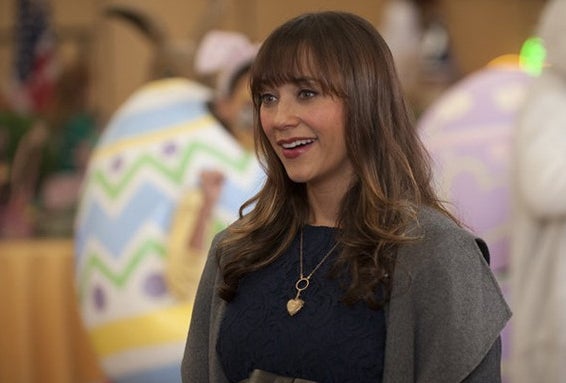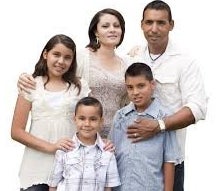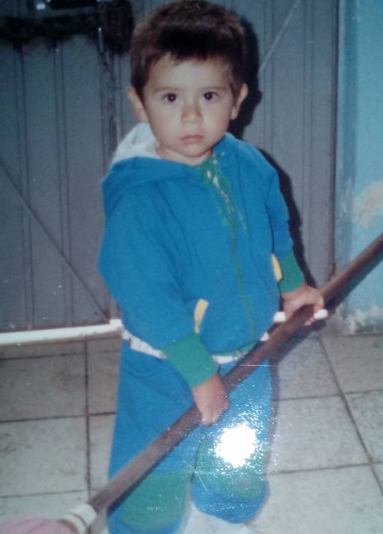
Rashida Jones as Ann Perkins in NBC’s Parks and Recreation.
I first heard the term racially ambiguous in a college class about race relations in America. The professor used it to refer to people whose racial background was not evident just by looking at their faces. It was also tied to the concept of “passing” as white, which meant people could mistake you for a white person. A few months later, I heard the term again in “Parks and Recreation,” when Leslie told her friend Anne her racial ambiguousness represented the melting pot that is America. Played by Rashida Jones, who is biracial, Anne’s ethnicity is never alluded to in the show, making her even more “racially ambiguous.”
Upon hearing the term, I immediately knew it applied to me. My interactions with people have shown me that I am perceived to be lots of things except what I really am, an immigrant of Mexican origin in the U.S. This has made for some interesting encounters and has made me wish I carried a book with the history of my country at all times in case someone wonders why I don’t conform to the image of the stereotypical Mexican.
I grew up in the state of Jalisco in Western Mexico. The people there have very diverse looks and span the full skin color spectrum. Some people wrongfully praise Jalisco for being a “whiter” state compared to other states in the country. This is offensive and inaccurate. Mestizos (of mixed Spanish and indigenous ancestry) are in fact the majority and indigenous minorities like the Huichol and Cora people are also present in the state. In the small city in Jalisco, where my family comes from, I never felt like an outsider. Plenty of people looked like me and some didn’t, but I didn’t make much of that. Diversity had always been present. Different ethnic groups have been intermarrying in that part of Mexico for centuries, so it’s not rare at all for a family to have members with different phenotypes that reflect this mixed heritage (phenotype refers to a person’s physical appearance ― traits like hair color, skin color, and facial features). My siblings, for example, have darker skin than me. I never really questioned this ― it all boils down to genetics: no two siblings are identical.
When I moved to South Carolina, a place with a very different history than Mexico’s Western states, I realized people weren’t so sure about siblings having different skin colors. To this day, people continue to remark that my brothers and I look nothing alike, alluding to our different pigmentation. This happens because in South Carolina, the main ethnic groups for a long time were whites and blacks, and intermarrying was not considered acceptable until the last quarter of the twentieth century. This history makes for a very different concept of race. Add to that the infamous one-drop rule that claims anybody with non-white ancestry is no longer considered white, and you get a very rigid classification of races that overlooks those who don’t fit into the extremes of the black-and-white binary.
In addition, U.S. media has represented Mexicans (and Latinos at large) almost exclusively as brown people. (Latino media, on the other hand, favors white people, but that’s a discussion for another day). There are Mexicans of every color, ethnic background and appearance. The average American is sadly unaware of their southern neighbors’ diversity, which has important African, Middle Eastern and East Asian minorities.

A typical Mexican family according to the media.
In high school, I was asked many times by fellow students if I was white. My accent and Hispanic name were enough to convince most people that I wasn’t, but initial impressions had them doubting. I once showed a friend a picture of me as a 3 year-old, and she remarked that I looked just like a white kid. If white refers to having European ancestry, I suppose I am "white." However, not only do I also have indigenous roots as a Mestizo, but I also understand that white and Hispanic Latino are labels that can conflict. In theory, there are Hispanics and Latinos of European descent. Culturally and ethnically, nonetheless, white culture and Hispanic/Latino culture are thought of as different. It’s complex, yes.

“You looked like a white kid!”
In college, people kept asking me about my ethnicity. The accent gave away my foreignness, but my appearance wasn’t enough to tell from which place. In most cases, after telling them I’m Mexican they told me about their wonderful trip to Cancún or San José del Cabo, to which I replied that most Mexicans have never really been to those places. I sometimes wonder if I could get away with pretending to be from somewhere else, have fun creating an alternate persona from Portugal or Argentina, who knows. During my study abroad trip to France, I noticed some people thought of me as a Spaniard. Considering there is a big Spanish community in Northern France and I have a Spanish name, I can see why they assumed that. They also, like Americans, think of Latin Americans as brown people, so logically they didn’t put me in that box.
These interactions are, by the way, mostly the product of harmless curiosity. I don’t mind people asking where I come from, even if they might be disappointed I don’t come from an exotic land one hears about on the Learning Channel. On the other hand, I’ve heard from non-Mexican Latinos that it’s hurtful when they are assumed to be Mexican because it erases their roots. The Latin American countries are all unique, so I can understand their frustration, and I wish they weren’t all lumped with us. I also have to recognize that my appearance entails a degree of privilege in the United States. People of color here express everyday that they are treated unjustly in public settings due to their race ― from being followed around in a department store to tragic brutality from the police, they have remarked that injustices arising from racism still occur on a daily basis. When I am able to pass as white, I don’t have to worry about this, unlike most people of color. I can say I’ve been treated differently too, but in most cases not negatively. I’ve had people approach me because they thought I was white in different settings. Navigating this awkward space of whiteness and non-whiteness has made me aware of how much what people perceive your ethnicity to be determines the way you are treated.
I am ending this in a positive note: the south is becoming increasingly diverse and people will eventually expand their minds when it comes to race and ethnicity. Biracial celebrities like singer-songwriter Halsey, rapper Logic and actress Rashida Jones are challenging the idea that one must be either black or white. A person can be both or even more than two races. In the future, they say, we’ll all be mixed. Maybe one day the term racially ambiguous will be archaic and foreign, but meanwhile, I’m happy to document my experience.
